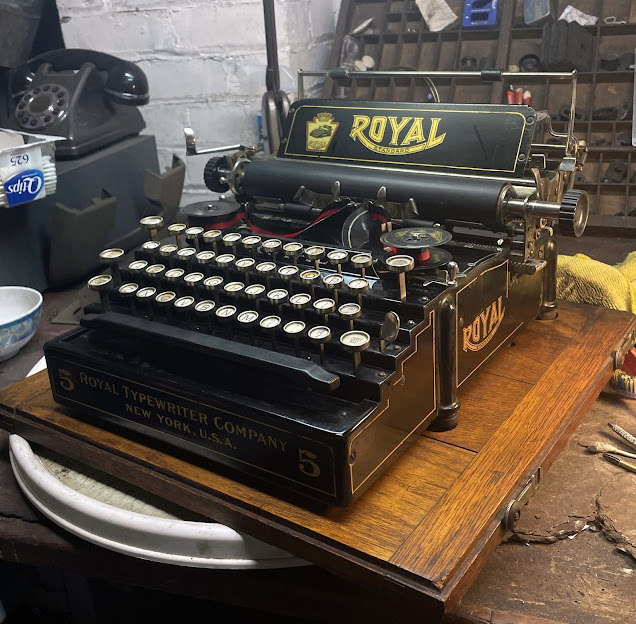Bob Sassone was curious to know more about the notebooks I use. So here is a rundown—of interest, maybe, to readers who love to write by hand (I suspect there's a significant overlap with typewriter lovers).
My notebooks fall into two groups.
There are the academic notebooks, which I've used since college for class notes (as a student, then as a teacher) and notes from conferences, lectures, etc. These are usually around 8.5" x 11". I am currently on my 41st volume.
Then there are the personal journals, which are smaller, usually 6"x8" or so. I started these in high school and I'm currently on my 19th.
UC Berkeley had a little room where you could buy books to support the library. They were discards or unwanted donations. I found quite a few bizarre oddities here, as well as a few ledger-style notebooks—the kind Bob Sassone says "look like something Scrooge would have used for his business." They had a few scientific notes, written in a fluid and confusing hand with a thick fountain pen. These must date from the 1950s or earlier.
I filled them with course notes (and doodles).
Once the "Scrooge" volumes were full, I turned to unruled artist's sketchbooks, which leave me free to organize text (and doodles) as I like.
For many years I preferred plain, black-bound sketchbooks. There were some exceptions, such as these beautiful volumes. My mother-in-law bought the green one for me in Egypt; I bought the other in Montalcino, Italy.
More recently, I've been using colorful (even a bit garish) blank notebooks produced by Flame Tree. Half Price Books sells these for only $10 apiece.
For the personal journals, I started out in high school with a little, paperbound, lined notebook. All the rest have been nicer, blank journals from various sources. I've gotten several from Epica, which imports beautiful Italian leather-bound journals. Pricey, but worth it.
Moleskine and Leuchtturm 1917 also make good journals, but I've gotten some with thin paper that allows too much ink to show through; in those cases I've written only on the recto (right-side pages).
My preferred handwriting tool is a Pilot Namiki vanishing-point fountain pen. Every year or so, I drop mine on its nib and have to replace it. I'm a klutz.
What if I really want to write something by typewriter? This happens pretty often when I'm preparing for class. I type it up and tape it into a notebook.
There is a lot of satisfaction in working with ink and paper, and filling a shelf with your writing.
What are your favorite ways to write by hand?












































